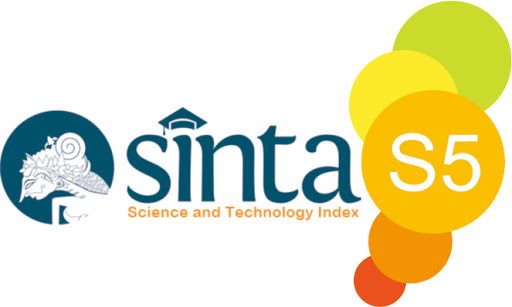Respons Of Islamic Stock Markets To Monetary Policy Empirical Evidence from Indonesia
DOI:
https://doi.org/10.21580/al-arbah.2019.1.1.4437Keywords:
stock market, money supply, exchange rate, inflation, interest rateAbstract
Abstract
Purpose - The impact of stock market and capital formation on economic growth in Indonesia for the period of January 2015 – May 2019. This paper examines a long-run equilibrium relation between stock market, capital formation and economic growth and other control variables.
Method - This study uses autoregressive distributed lag (ARDL) model.
Result - Findings revealed that none of the models was stationary at level but were all stationary at first difference. There is not a short run significant relationship between stock market, capital formation and economic growth in Indonesia. In the long run, capital formation has a significant positive association on economic growth and a negative non-significant relationship between stock market and economic growth in Indonesia.
Implication - This research is useful to know the response of Sharia market to monetary policy instruments in Indonesia so that the Sharia stock market strategy is potentially developing in the future to encourage the achievement of characteristics such as An alternative source of financing and investment for economic actors and able to facilitate risk mitigation needs for market participants and able to drive the efficiency of transactions in the market through the improvement of the quality of stock market infrastructure Sharia.
Originality - The update of this research is response of Sharia stock market response to monetary policy instruments in Indonesia that are researched using ARDL models.
Downloads
References
Abdalla, Issam & Murinde, Victor., (1997). Exchange Rate and Stock Price Interactions in Emerging Financial Markets: Evidence on India, Korea, Pakistan and the Philippines. Applied Financial Economics. 7(1): 25-35
Adamu, Hassan., Mika’ilu, Abubakar., & Umar, Dantama Yusuf. (2017). Determinants of Exchange Rate Volatility: New Estimates from Nigeria. Eastern Journal of Economic and Finance. 3(1): 1-12
Alatiqi, Sara and Fazel, Shokoofeh. (2008). Can Money Supply Predict Stock Prices?. Journal for Economic Educators.
Al-Smadi, Mohammad. O. (2018). Determinants of foreign portfolio investment: the case of Jordan. Investment Management and Financial Innovations, 15(1), 328-336.
Ananwude, Amalachukwu Chijindu, dan Osakwe, Charity Ifunanya. 2017. Stock Market Development and Economic Growth in Nigeria: A Camaraderie Reconnaissance. Research Journal of Economics, 1(3), 1-6.
Bahloul, Slah., Mroua, Mourad & Naifar, Nader. (2017). The Impact of Macroeconomic and Conventional Stock Market Variables on Islamic Index Returns Under Regime Switching. Borsa Istanbul Review. 17(1): 62-74
Bala Sani AR and Hassan A. (2018). Exchange Rate and Stock Market Interactions: Evidence from Nigeria. Arabian Journal of Business and ar A Management Review. 8(1): 3-5
Beck, T. and Levine, R. (2004). Stock Markets, Banks, And Growth: Panel Evidence. Journal of Banking & Finance, 28(3): 423-442
Bong-Soo, L. (1992). Causal Relations among Stock Returns, Interest Rates, Real Activity, and Inflation. Journal of Finance. 47(4); 1591-603.
El-Hasanah, Lak lak Nazhat & Panjawa, Jihad Lubis. (2016). The Effectiveness of Monetary Policy Towards Stock Index Case Studi : Jakarta Islamic Index 2006-2014. Jurnal Ekonomi Pembangunan, 17(1): 100-107
Kasman, Vardar dan Tunc. (2011). The impact of interest rate and exchange rate volatility on banks' stock returns and volatility: Evidence from Turkey”. Economic Modelling, (28): 1328–1334
Li, Yijun. (2012). Empirical Study on the Relationship between Money Supply and Stock Market in Europe. International Conference on Information Computing and Applications. 539-544
Ozbay, E. (2009). The Relationship Between Stock Returns And Macroeconomic Factors: Evidence For Turkey. Devon, University of Exeter, Financial Analysis and Fund Management, Yayınlanmamış Yüksek Lisans Tezi, Master of Science Thesis
Pan, Lei dan Mishra, Vinod. 2018. Stock Market Development and Economic Growth: Empirical evidence from China. Economic Modelling. 68: 661-673
Pratama, Yoghi Citra & Aziz, Abdul. (2018). Macroeconomic Variables, International Islamic Indices, and The Return Volatility in Jakarta Islamic Index.Al-Iqtishad: JurnalIlmuEkonomiSyariah (Journal of Islamic Economics). 10(1): 171-188
Suhaibu, Iddrisu., Harvey, Simon K &Amidu, Mohammed. (2017). The Impact of Monetary Policy on Stock Market Performance: Evidence from Twelve (12) African Countries. Research in International Business and Finance. 42(C): 1372-1382
Svensson, Lars E O (1997) Inflation Forecast Targeting: Implementing and Monitoring Inflation Targets. European Economic Review. 41(6): 1111– 1146
Yoshino, Naoyuki., Taghizadeh-Hesary, Farhad., Hassanzadeh&Prasetyo, Ahmad, (2014). Response of Stock Markets to Monetary Policy: An Asian Stock Market Perspective. Macroeconomics Working Papers. East Asian Bureu of Economic Research
Yusof, Rosylin Modh& Majid, M. ShabriAbd. (2007). Macroeconomic Variables and Stock Returns in Malaysia: An Application of The ARDL Bound Teting Approach. Savings and Development. 31(4):449-469
Downloads
Published
Issue
Section
License
Authors who publish with this journal agree to the following terms:
Authors retain copyright and grant the journal right of first publication with the work simultaneously licensed under a Creative Commons Attribution-NonCommercial-ShareAlike 4.0 International License. that allows others to share the work with an acknowledgement of the work's authorship and initial publication in this journal.
Authors are able to enter into separate, additional contractual arrangements for the non-exclusive distribution of the journal's published version of the work (e.g., post it to an institutional repository or publish it in a book), with an acknowledgement of its initial publication in this journal.
Authors are permitted and encouraged to post their work online (e.g., in institutional repositories or on their website) prior to and during the submission process, as it can lead to productive exchanges, as well as earlier and greater citation of published work (See The Effect of Open Access).
Licensing

This work is licensed under a Creative Commons Attribution-NonCommercial-ShareAlike 4.0 International License.



.png)



